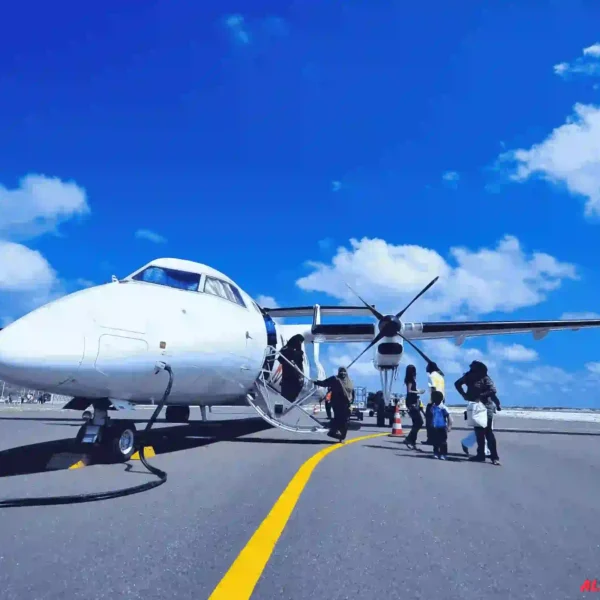The Middle East is a diverse and culturally rich region, offering travelers everything from ancient historical sites to modern wonders. Whether you dream of exploring the pyramids in Egypt, shopping in Dubai, or floating in the Dead Sea, there’s something for everyone. This guide provides essential tips on visas, safety, cultural etiquette, budgeting, and travel hacks to ensure a smooth and memorable journey. So, let’s dive into the best tips for traveling to the Middle East!
1. What Every Traveler Should Know About Middle East
Geographical & Cultural Diversity
The Middle East is a vast region that connects Asia, Africa, and Europe. It includes countries with different cultures, languages, and traditions. Popular destinations include:
- Gulf Countries (UAE, Saudi Arabia, Qatar, Oman) – known for luxury travel and modern cities.
- Levant Region (Jordan, Lebanon, Israel, Palestine) – rich in history and natural wonders.
- North Africa (Egypt, Morocco) – offering a blend of ancient ruins and vibrant culture.
Even though these countries share some cultural similarities, each has its own laws and customs. Understanding these differences will help you travel smoothly.
Top Destinations & Travel Hotspots
If you’re planning a trip, here are some of the best places to visit:
- Dubai, UAE – Iconic skyline, luxury shopping, desert safaris, and the world’s tallest building, Burj Khalifa.
- Istanbul, Turkey – A mix of European and Middle Eastern influences with a rich history.
- Petra, Jordan – A stunning ancient city carved into red rocks, also known as the “Lost City.”
- Cairo, Egypt – Home to the legendary Pyramids of Giza, the Sphinx, and the bustling Khan El Khalili market.
- Muscat, Oman – A peaceful city with beautiful beaches, forts, and traditional Arabian culture.
The Middle East has something for every traveler—whether you love history, adventure, or luxury.
2. Visa & Entry Requirements for Middle Eastern Countries
Visa and entry requirements vary across the Middle East, depending on your nationality and the country you plan to visit. Here’s a general breakdown:
- Visa-Free Countries – Some countries allow visa-free entry for specific nationalities. For example, Turkish and Lebanese passport holders can travel to Jordan without a visa.
- Visa on Arrival (VoA) – Many countries, like the UAE, Oman, and Bahrain, offer visas on arrival for travelers from eligible nations.
- E-Visa – Countries like Saudi Arabia, Turkey, and Egypt allow travelers to apply for an e-visa online before arrival.
- Pre-Approved Visa – Some countries, including Saudi Arabia and Iran, require visitors to apply for a visa before traveling.
- Required Documents – Ensure your valid passport, travel insurance, essential documents, and necessary permits are in order.
Tips to Avoid Visa Issues
✅ Check visa policies on official government websites before booking flights.
✅ Apply for an e-visa early to avoid last-minute problems.
✅ Carry printed copies of your visa and travel documents.
Each country has different rules, so always double-check the latest visa policies before traveling.
3. Best Time to Visit the Middle East (Seasonal Guide)
The Middle East has a mostly hot and dry climate, but the weather varies across different regions. To avoid extreme heat and enjoy your trip, plan your visit based on the seasons:
- Winter (Nov–March) – Ideal for sightseeing with pleasant weather.
- Summer (May–Sept) – Hot temperatures, but fewer crowds and cheaper travel options.
- Best Months for Budget Travel – Consider visiting during shoulder seasons (April & October) for lower prices and moderate weather.
Festivals & Events to Consider
The Middle East hosts many unique festivals and celebrations that can enhance your travel experience:
- Ramadan (Varies yearly) – A holy month observed by Muslims. Expect shorter business hours but a fantastic cultural experience with night markets and Iftar feasts.
- Dubai Shopping Festival (January – February) – Huge discounts on luxury brands, concerts, and entertainment.
- Nowruz (March 21) – The Persian New Year, celebrated in Iran, Turkey, and Kurdish regions, with cultural performances and feasts.
- Hajj (Islamic pilgrimage to Mecca) – If visiting Saudi Arabia, avoid peak Hajj season unless you’re traveling for religious purposes.
Choosing the right time to visit will make your trip more comfortable and enjoyable.
4. Cultural Etiquette & Local Customs You Must Follow
The Middle East is rich in culture and traditions. While locals are often welcoming, it’s essential to respect their customs to avoid misunderstandings. Here are some key etiquette tips:
Dress Code Guidelines
- Modesty is key, especially in conservative countries like Saudi Arabia, and Iran, and in conservative parts of Egypt and Jordan.
- Women should consider wearing long dresses and covering their shoulders in public places.
Greetings & Social Norms
- A handshake is common but wait for the other person to initiate.
- Avoid public displays of affection, as they may be frowned upon.
Religious Considerations
- Be aware of prayer times, especially in Muslim-majority countries.
- Respect religious sites by dressing appropriately and following local rules.
Cultural Do’s & Don’ts
🚫 DO NOT criticize religion or politics – Speaking against Islam, the government, or local rulers can lead to serious consequences.
🚫 DO NOT point your feet at people – In Arab culture, showing the soles of your feet is considered rude.
🚫 DO NOT take photos of people without permission – Especially women, military areas, and government buildings.
✅ DO accept hospitality – Middle Eastern culture is known for its generosity. If offered tea or food, it’s polite to accept it.
✅ DO use your right hand – Whether shaking hands, eating, or giving money, the right hand is considered more respectful.
Understanding these cultural norms will help you blend in, show respect, and enjoy a more authentic experience in the Middle East.
5. Safety Tips: Is the Middle East Safe for Travelers?
- Common Misconceptions – The region is generally safe, but research your destination.
- Safe Tourist-Friendly Cities – Dubai, Muscat, Amman, and Istanbul are considered safe for travelers.
- Emergency Contact Numbers – Have local embassy contacts and emergency services saved.
- Areas to Avoid – Before visiting countries like Syria, Yemen, Iraq, or certain parts of Lebanon, research the current situation and consider alternative destinations.
By following these safety tips, you can enjoy a worry-free trip and make the most of your Middle Eastern adventure.
6. Budget & Cost-Saving Travel Tips for the Middle East
- Finding Cheap Flights & Accommodation – Use budget airlines and compare hotel deals.
- Affordable Transportation Options – Public transport is cheaper than taxis in most cities.
- Eating on a Budget – Enjoy street food and local markets for delicious yet inexpensive meals.
How Much Should You Budget?
Your budget depends on the country and your travel style. Here’s a rough estimate of daily expenses:
- Budget Travel ($30–$70 per day) – Hostels, street food, public transport, and free attractions.
- Mid-Range ($80–$150 per day) – 3-star hotels, dining at restaurants, guided tours, and taxis.
- Luxury ($200+ per day) – 5-star hotels, fine dining, private tours, and premium experiences.
💰 Budget Tip: Countries like Egypt, Turkey, and Jordan are more affordable, while UAE, Qatar, and Oman are pricier. With smart budgeting, you can explore the Middle East without breaking the bank while still enjoying an incredible experience!
7. Packing List: What to Bring When Traveling to the Middle East
Packing smart is essential for a comfortable trip to the Middle East. The climate, culture, and activities vary across the region, so here’s what you need to bring:
- Weather-Specific Clothing – Lightweight clothes for summer, warm layers for winter.
- Tech & Security Essentials – VPNs, universal adapters, and local SIM cards.
- Respectful Attire – Carry a scarf or shawl for visiting religious sites.
For the best and smoothest packing, explore the packing checklist.
8. Transportation Tips: Getting Around Middle Eastern Cities
Each city has different transportation options. Here’s what to expect:
- Public Transport vs. Private Rentals – Metro systems in Dubai and Istanbul are efficient and budget-friendly.
- Walking – Safe and enjoyable in pedestrian-friendly areas like Istanbul’s Old City, Dubai Marina, and Amman’s downtown.
- Ridesharing & Local Taxis – Apps like Careem and Uber are widely available.
With proper planning, getting around the Middle East can be smooth, affordable, and even enjoyable!
9. Safety Tips for Travelers in the Middle East
The Middle East is generally safe for tourists, but like any region, it’s important to stay aware and take precautions. Here are key safety tips to ensure a smooth and worry-free trip.
General Safety Tips
✅ Stay Aware of Local Laws – Laws vary by country. For example, public displays of affection are restricted in the UAE, and alcohol consumption is banned in Saudi Arabia. Always research local rules before your trip.
✅ Respect Religious & Cultural Norms – Dress modestly, avoid loud behavior in public, and be mindful of religious sites.
✅ Keep Your Valuables Secure – Pickpocketing is rare but can happen in busy markets and tourist areas. Use a money belt or anti-theft backpack.
✅ Avoid Political Discussions – Politics can be a sensitive topic in some Middle Eastern countries. It’s best to avoid publicly discussing or criticizing the government.
Health & Medical Safety
💊 Bring Any Necessary Medications – Some medicines require prescriptions in Middle Eastern countries. Keep important medications in their original packaging.
💧 Stay Hydrated – The desert heat can cause dehydration. Always carry a bottle of water and drink frequently.
🦟 Use Mosquito Repellent – Especially important in Egypt and Jordan, where mosquitoes can be a nuisance.
Women’s Safety Tips
👩🦰 Dress Modestly – While major cities like Dubai and Istanbul are more relaxed, it’s best to wear loose-fitting clothes and carry a scarf for religious sites.
🚕 Use Ride-Hailing Apps – Instead of hailing a random taxi, use Uber or Careem for added security.
👯 Solo Female Travelers – The Middle East is safe for solo women, but sticking to tourist-friendly areas and group tours can enhance comfort and security.
Scam Awareness & Avoiding Tourist Traps
🚕 Taxi Scams – Always use metered taxis or negotiate the fare in advance to avoid being overcharged.
🛍 Overpriced Souvenirs – Bargaining is common in souks and bazaars. Never accept the first price!
📸 Fake Tour Guides – Always book tours through reputable agencies or official tourism offices.
🛑 ATM & Money Exchange Scams – Avoid exchanging money on the street. Use official exchange centers or ATMs inside banks.
🛑 The “Gift” Scam – A local may give you a free souvenir or bracelet, then demand payment. Politely refuse unexpected gifts.
🛑 Overpriced Market Goods – Some sellers inflate prices for tourists. Always bargain in souks and compare prices before buying.
Emergency Contacts & Travel Insurance
📞 Save Emergency Numbers – Each country has different emergency numbers for police, ambulance, and fire services. Save them before you travel.
🛡 Get Travel Insurance – It covers medical emergencies, lost baggage, and trip cancellations, giving you peace of mind.
By following these practical safety tips, you can confidently enjoy your trip and experience the beauty, culture, and history of the Middle East without worries!
Final Travel tips for traveling to the Middle East
Traveling to the Middle East is an unforgettable adventure filled with rich history, stunning landscapes, and warm hospitality. Whether you’re exploring the bustling souks of Marrakech, standing in awe before Petra’s ancient ruins, or relaxing on the beaches of Dubai, this region offers something for every traveler.
Key Takeaways for a Smooth Trip
✔ Respect Local Customs – Understanding cultural norms enhances your experience and shows appreciation for the region.
✔ Plan Smart & Pack Wisely – The right clothing, travel essentials, and local SIM cards can make your trip stress-free.
✔ Stay Open-Minded – Embrace new experiences, try local foods, and interact with people to get a true taste of Middle Eastern culture.
✔ Be Safe & Aware – While the Middle East is generally safe, following basic precautions ensures a smooth journey.
Why You Should Visit the Middle East
🌍 Breathtaking Diversity – From ancient wonders to modern cities, the region blends history and innovation.
🍛 Mouthwatering Cuisine – Whether it’s Shawarma in Lebanon, Kabsa in Saudi Arabia, or Kunafa in Jordan, every dish tells a story.
🏜 Unmatched Hospitality – The warmth and generosity of Middle Eastern people make visitors feel truly welcome.
If you’re looking for a destination full of culture, adventure, and breathtaking scenery, the Middle East should be at the top of your list. Pack your bags, embrace the journey, and get ready for an experience of a lifetime!






